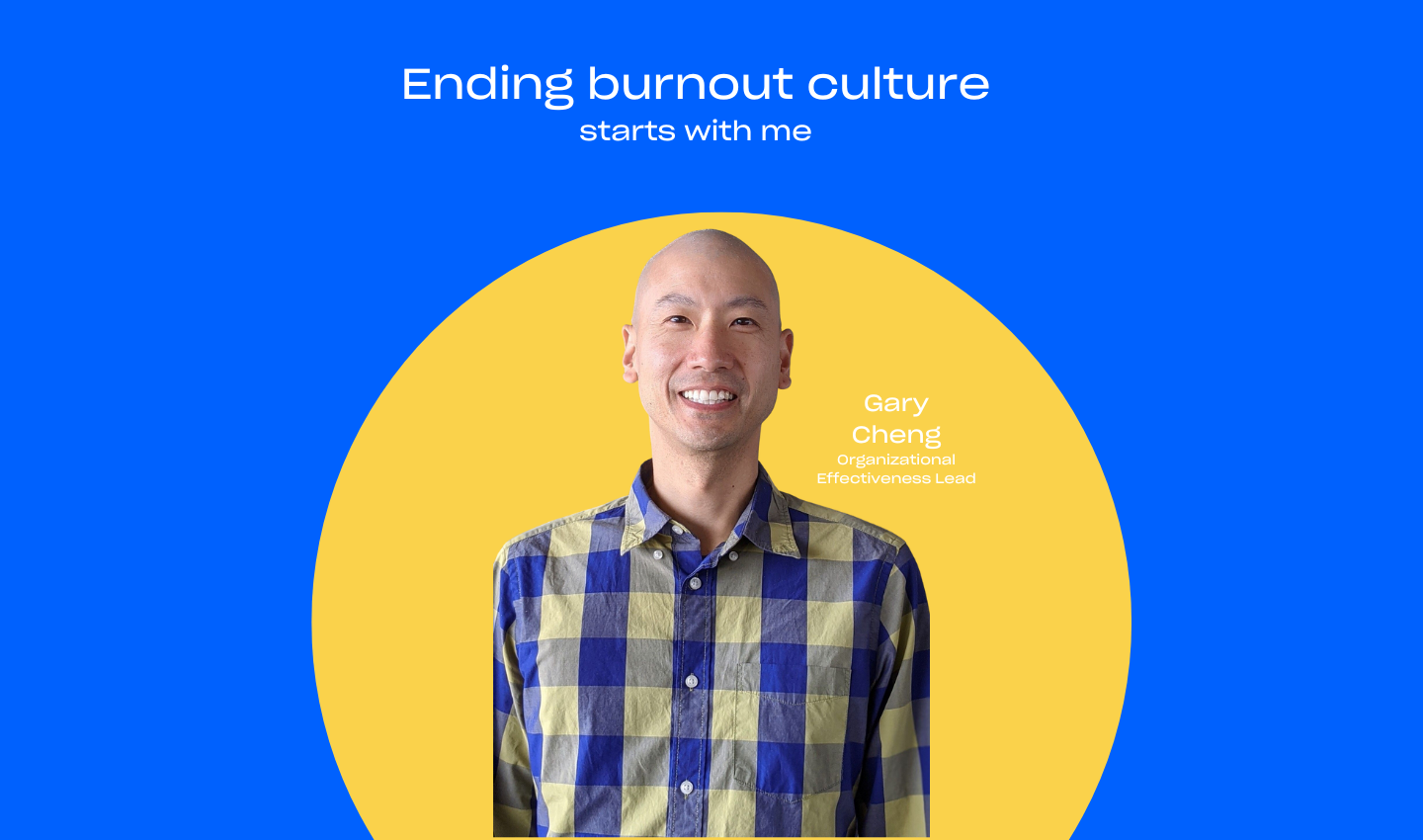Ending burnout culture starts with me: Gary Cheng

Our mission at Dropbox is to design a more enlightened way of working, and that includes addressing burnout culture. I start by anchoring myself in our core value of Make Work Human. Even though I’m not a people manager, I know that ending burnout culture starts with me and I want to Make Work Human for my fellow colleagues. And while I will probably never actually end burnout culture, I do think I can help to close the gap. Author Jonathan Malesic describes burnout as the experience of having to stretch across the gap between your ideals about work and your reality at work. If we can reduce that gap, it directly addresses burnout. Here’s how I’m trying to do my part:
- Name it to tame it (as coined by Dan Siegel). The first step is to define burnout accurately. Christina Maslach’s research outlines three components of burnout: exhaustion, depersonalization, and ineffectiveness. People experience a different “flavor” of burnout depending on the unique combination they’re experiencing between exhaustion (feels like having no energy), depersonalization (feels like cynicism), and ineffectiveness (feels like frustration). Naming the primary source(s) of your burnout is important because taking time off will not help if your burnout is caused by a sense of ineffectiveness at work. Whenever I talk about burnout with anyone, I try to name which component(s) are the root cause, which leads to better solutions.
- Change the culture through team norms. My team is changing the culture through our team norms, accountability, and predicting the future.
- Team norms. We begin every team meeting with a "burnout meter” check-in. I noticed that I was uncomfortable with ambiguous definitions of each status, so I started a discussion for us to agree on what each burnout status looks like and sounds like so that it made sense to all of us. Having shared, co-created definitions has gone a long way in creating psychological safety for me and my teammates. Here are our definitions for burnout status:
- Green
 - strategic work, deep work, potential boredom/not enough work, not a lot of meetings
- strategic work, deep work, potential boredom/not enough work, not a lot of meetings - Yellow
 - strategic work, tactical work, reasonable meetings, feeling caught up
- strategic work, tactical work, reasonable meetings, feeling caught up - Orange
 - working nights more than I want, feeling behind
- working nights more than I want, feeling behind - Red
 - working nights, can’t do it for much longer, can’t break for dinner, can’t go to gym or take breaks, not able to accomplish everything on plate/missing deadlines/playing catch-up
- working nights, can’t do it for much longer, can’t break for dinner, can’t go to gym or take breaks, not able to accomplish everything on plate/missing deadlines/playing catch-up
- Green
- Team norms. We begin every team meeting with a "burnout meter” check-in. I noticed that I was uncomfortable with ambiguous definitions of each status, so I started a discussion for us to agree on what each burnout status looks like and sounds like so that it made sense to all of us. Having shared, co-created definitions has gone a long way in creating psychological safety for me and my teammates. Here are our definitions for burnout status:
- Accountability. Since we set metrics for every other project, why not for burnout? I asked my team if we could answer the question, “In an ideal quarter, how many weeks do we want to spend in each burnout status?” Answering that allowed us to set quarterly targets that fit our team: X amount of weeks in green, Y amount of weeks in yellow, and so on. Every quarter, we can check ourselves on how many weeks we actually spent in each burnout status and compare that to our ideal targets. This allows us to have shared expectations and also hold ourselves accountable to making needed adjustments to Make Work Human for each other as a team.
- Burnout Prediction. I noticed that the burnout meter is a look-back activity, so we’re really limited to being reactive. Therefore, I suggested that we end each burnout check-in with a simple prediction of next week’s burnout status: “Next week, yellow
 .” This now allows team members in green/yellow to proactively support team members who anticipate being orange/red so we can prevent burnout before it happens.
.” This now allows team members in green/yellow to proactively support team members who anticipate being orange/red so we can prevent burnout before it happens.
You don’t have to be a people manager to help end burnout culture. Just like all cultural systems, I am a contributor to my culture at work and changing it starts with me. These are some lessons I’ve learned along the way, and I know any of us can be agents of change in our own spheres of influence. It starts with me.